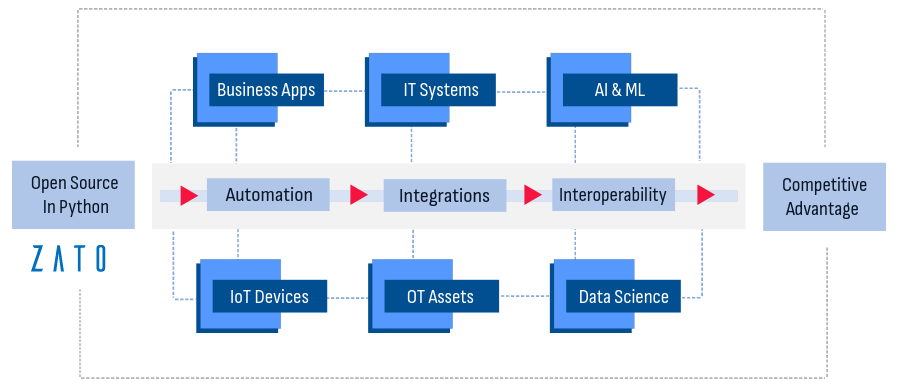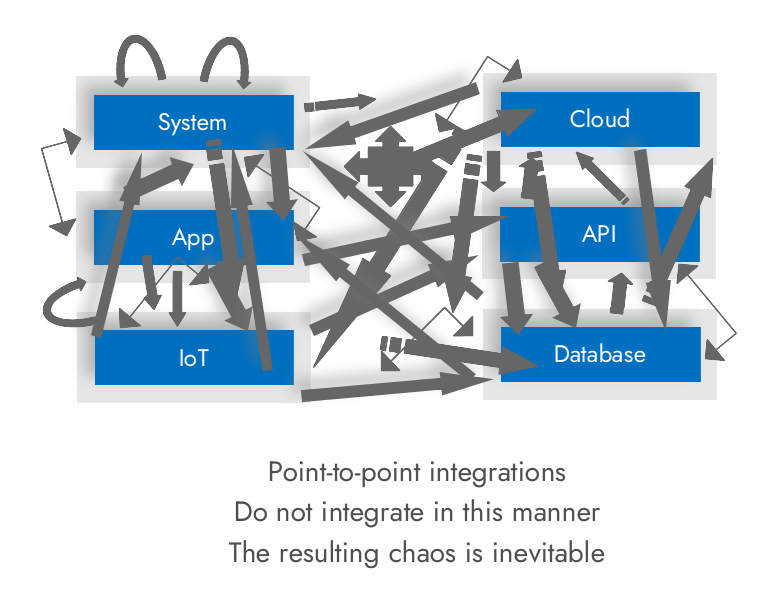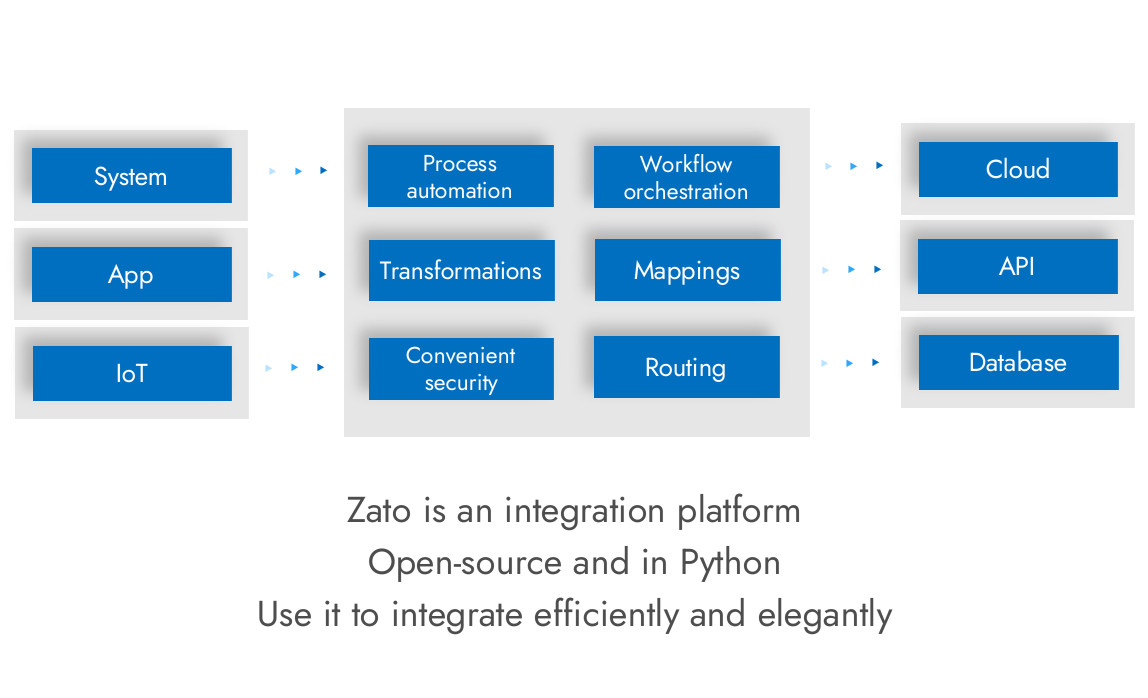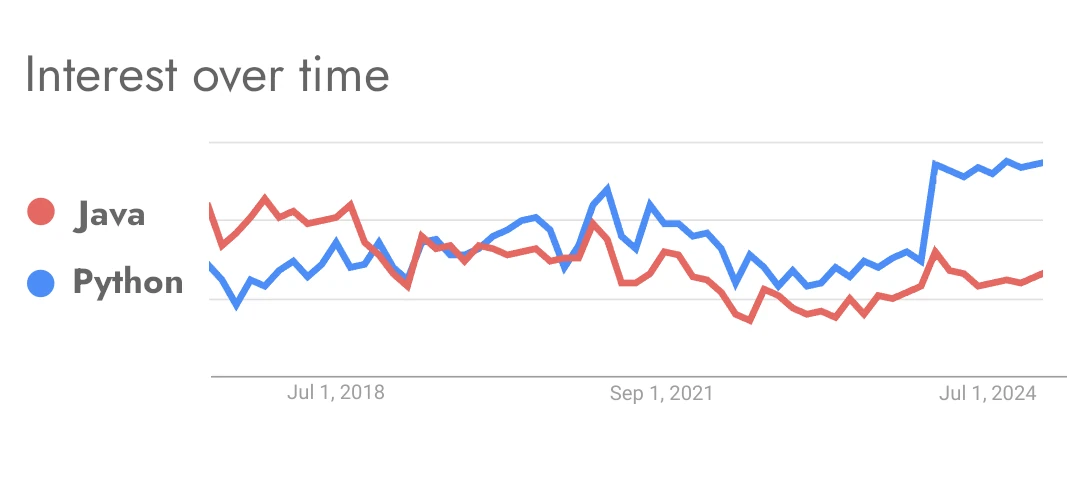What is iPaaS? The Essential Guide to Integration Platform as a Service in Python

Key Takeaways
iPaaS (Integration Platform as a Service) is a software tool that enables seamless integration between various applications and systems, facilitating the creation of cohesive and efficient digital ecosystems within enterprises.
Key benefits of adopting an iPaaS solution include simplified application integration, easier adoption of AI, elimination of manual workflows, enhanced data accuracy through automated workflows, and robust support for digital transformation initiatives through the ease with which you can incorporate new technologies.
Python is a new career language, and universities around the world have stopped teaching Java, so a business question for decision makers is, who are you going to hire soon if you don't invest in Python competences and tools today?
Understanding iPaaS
Think of iPaaS as a middle layer, sitting between the actual systems and applications, allowing businesses to connect and extend their reach across various environments, from on-premises systems to cutting-edge cloud applications.
iPaaS isn't just about linking different software, though. It's very much about conveniently crafting an efficient digital ecosystem that fully aligns with your organization's strategy and structure.
The result? Enhanced business efficiency and unified workflows that help to eliminate manual work while making it easier and much more convenient to incorporate new technologies at the same time.
Convenience of use is the key part here - theoretically, it's possible to connect systems without an iPaaS, in a point-to-point manner, but it's not a good idea because it leads to spaghetti integrations where systems communicate directly with each other and, rather quickly, the resulting convoluted architecture becomes difficult to maintain and it's cumbersome to advance it.
That's why it's important that iPaaS equals convenience and that's also why it's important to use Python - it's the most convenient programming language available today.

Common iPaaS Use Cases
The typical use cases of iPaaS revolve around digital transformation, integrations and automation of your operations where, very often, every single day something will require manual work under pressure.
If you have multiple software or hardware systems, no matter if they are yours, your partners' or clients', and whether they run in the cloud or on premises, a Python iPaaS will let you to:
- Automate workflows and reduce manual work
- Build a sustainable and reliable integration architecture that will last for decades, while you can focus on higher-level tasks
- Achieve vendor independence, allowing you to connect applications in a plug-and-play manner
- Increase work satisfaction because you and your organization's teams won't have to routinely get involved in mundane tasks that are now automated
- Increase accuracy and reduce errors that would inevitably creep into systems without automated workflows
- Get timely data and operational insights about your business, now that the systems can be integrated in a streamlined way
- Implement projects with complex timelines, even if the vendors you rely on each will have a different one
- Gain total visibility into your data and operations, which in turn will allow you to answer the most pressing questions: Is my business running correctly? Is everything working? What can be improved?
- Orchestrate complex business processes and ensure real-time communication between cloud and on-premise applications
- Migrate on-premise systems to the cloud without downtime

Why iPaaS in Python?
Clearly, there are benefits stemming from an introduction of iPaaS, but why Python specifically?
Put simply, Python is a new career language that universities teach today instead of Java, and this has two major implications: one is technical, and the other has clear business impact and strategic ramifications
On a technical level, Python is a very high-level programming language, which means that it's easy to express complex business logic and rules in it. Zato gives you a GUI Dashboard with many connectors to choose from, and then you have a low-code Python environment in which to develop the actual integration.
The reason why it's important is that it's not really possible to build non-trivial integrations and automation workflows without a real programming language. Sooner or later, and usually it's sooner, you need to add some programming to the mix.
The more complex your architecture becomes, the more important it is to use a real language. It's a smart move to anticipate this from the beginning and choose a platform that is already prepared for it, using Python.
The business consequences of Python replacing Java are related to attracting of and retaining the best talent in the market. As a leader, you need to ponder a couple of matters:
Since people leaving universities today are taught Python instead of Java, you should look for solutions in Python, which will allow you to build and expand internal skills in a harmonious way.
Conversely, the same people you hire will surely expect you to provide your teams with a work environment that enables them to make the best use of their existing abilities and skills. Achieving consensus with your talent should always be a top priority if you want to have a top-performing organization, so it makes sense to use Python, the language that the majority of people now stake their careers on.
Let's visualize it with two diagrams.
First, here's how Python has overtaken Java. The crossover point was in 2018, and it's a macro trend that can be only expected to accelerate, given the contemporary focus on cloud and AI - areas where Python shines

Now, let's check what people prefer and what they would use if they were given a free choice.

Moreover, people aged 25-30 prefer Python over Java by a large margin. This is the upcoming generation of CTOs, CIOs, and architects. So again, the question is, who are you going to hire? How are you supposed to attract the very best people if you don't use an essential technology that most people want and are being educated in?
If you're choosing an iPaaS solution, you're making a choice for the next 10-15 years at a minimum. Therefore, Python iPaaS is an obvious choice because Python is expected to remain the most popular language in the decades to come.




 — John Adams
— John Adams